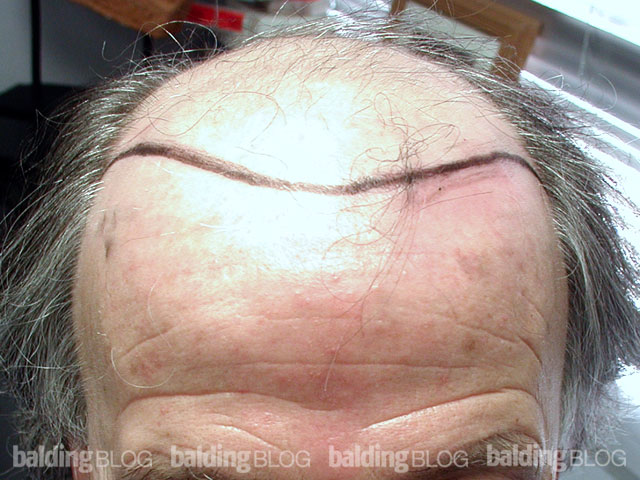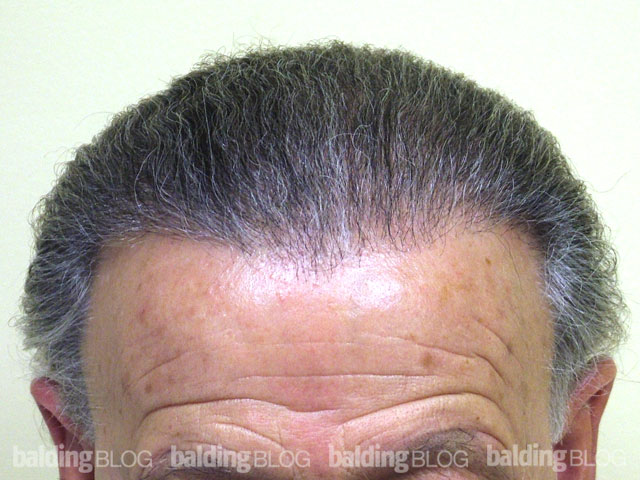I have followed this site for a few years now and I am so impressed. First off, your integrity seems to be apparent in how you run this site. There is none of the cheap salsmanship common to some of the hair replacement surgeons with whom I have spoken. You provide so much disclosure that it is obvious that you truly want educated patients. It seems to me that the medical hair replacement industry was crying for someone like you.
With that, I am happy to share with you my story and ask you my questions. I am a 45 yr old male who began losing his hair at 19. I was told early on by a few surgeons that I was an excellent candidate for hair transplantation because my donor hair was so good (it was rated a 9 out of a possible 10). I believe that I am a Norwood 6 but I know that I have long lost all the hair that I was to lose. I have had 13 hair transplant procedures with Dr. X [editor’s note: name removed] and 2 scalp reductions with another doctor. The procedures were performed between 1989 and 2001. In total, I had 1679 “large” grafts, 379 “medium” grafts, and 321 “single” grafts. My hair provides decent coverage for someone who by this time would have been left with only what I call “clown fringe” (I am sure the visual will resonate with you) but I do use a concealer (Fullmore) to hide some small patches of my crown which show, and some of the scarring. My goal is to surgically get more coverage – or at least more uniformity in my existing coverage – so that I can stop using the concealer. I would like a good evaluation on what surgical options may be open to me, as I have already had so much work already performed and donor hair is not so plentiful. These are my questions:
- Do you ever do any work in NYC/LI?
- If the answer to #1 is no, can you recommend any good and caring surgeons in the NY/LI area?
- It seems like FUE2 would be a natural choice for someone who has had so much work performed already and where so much donor hair might not be harvestable in one strip. Is this a correct assumption?
- Is it possible to do many smaller strips so as to increase yield for someone who has had so much work performed already? Does it matter from where the strips are taken? I think that I may have some donor hair on the high sides.
- I have not heard of too many people having as much work as I have had. Does the work I describe sound like it is so much? Are you aware of many people who have had more work?
- I have been using a concealer for 15 years – just during the week and just during the day. Are there any health affects of such prolonged use?
- How does the cost of the FUE2 compare with the normal strip method?
Any of these questions which you can answer would be appreciated.
Keep up the site.
- At the moment, I only have offices in California and do not plan on going to New York.
- Dr. Robert Bernstein is a caring and competent doctor with a Manhattan location.
- Follicular unit extraction (FUE) is less productive when donor densities are down from multiple surgeries and when there is lots of scarring.
- With regard to taking high strips, it is generally not a good idea as high strip scars tend to show and they may not be in the permanent zone, so the hair may not last your lifetime.
- I have seen many patients that have had more than a dozen surgeries plus scalp reductions. One patient I met had 27 procedures, of which I believe most were sham surgeries. Without seeing you, I can not comment on what you did and did not get.
- Your approach with the use of concealers is well defined in my new book, Hair Loss and Replacement For Dummies, for the readers who do not know much about them.
- FUE costs are high compared to the strip method, but more important, they may not be very productive. FUE costs roughly 2x the amount of strip procedures, per graft.
The problem with your situation is donor scarring and your donor area must be a mess. It’s difficult to make any real advisable points without first seeing what I’m dealing with, but you might be able to excise the highly scarred donor area (probably using a balloon expander) if that is bothersome to you. Good luck.



 As long as you and your doctor have realistic goals in mind, and you have the donor hair available to do it, anytime would be a viable time if you are serious about a hair transplant.
As long as you and your doctor have realistic goals in mind, and you have the donor hair available to do it, anytime would be a viable time if you are serious about a hair transplant.